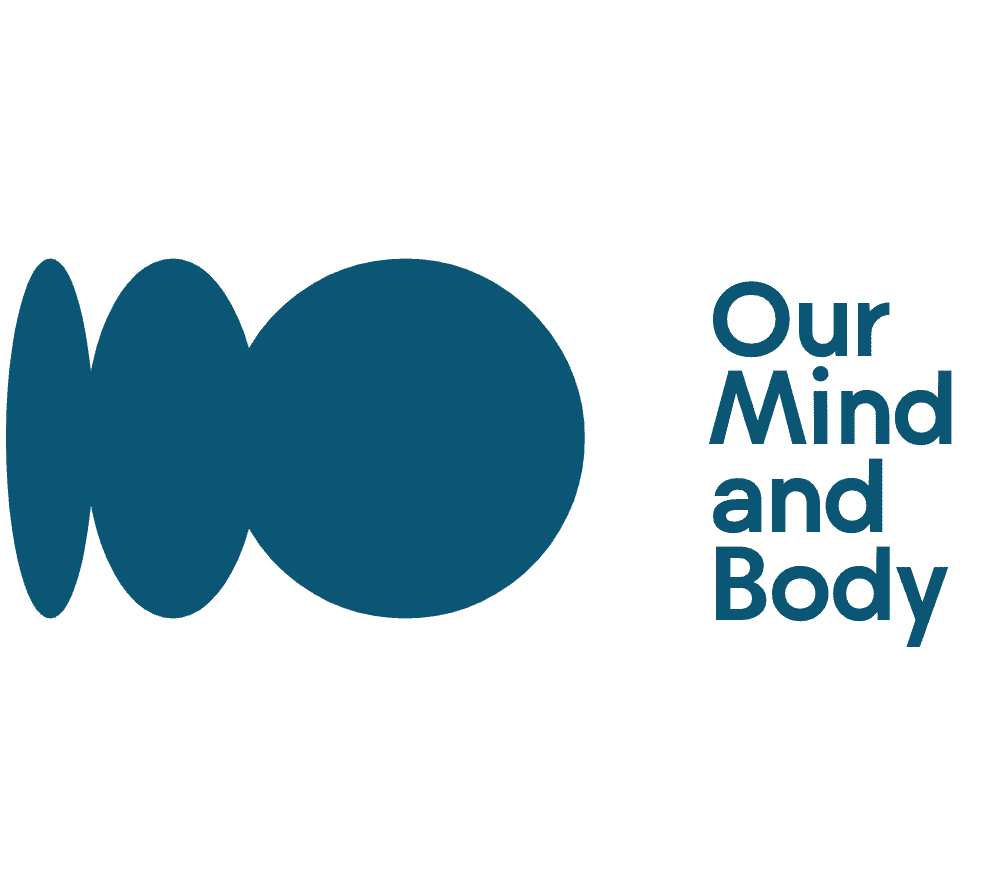Well-Being Tips
Mastering Expectation Management: Home, Work, And Relationships

Do you feel disheartened when things don’t live up to your anticipations? Now is the moment to seize charge and become adept at managing your expectations.
Just like a skilled conductor who orchestrates a symphony, we can learn to set clear, reasonable, and reachable expectations in our homes, workplaces, and relationships.
By understanding the importance of effective communication, regular evaluation, and adjustment of expectations, we can create a harmonious and fulfilling life.
In this article, we will explore proven strategies to help you navigate the complexities of expectation management in all areas of your life.
Key Takeaways
- Clear and reasonable expectations are crucial in avoiding the consequences of unmet expectations.
- Establishing routines, using charts or contracts, and involving others in setting expectations can help manage expectations at home.
- Communication and following up with consequences are key in setting and implementing expectations at work.
- Understanding and managing customer expectations are vital in delivering satisfactory service.
Setting Clear Expectations
I set clear, reasonable, and reachable expectations for myself and others in various aspects of my life. This includes at home, work, and in relationships.
Setting clear expectations is crucial to avoid the consequences of unmet expectations. As a parent, I understand the importance of setting expectations for my children’s chores and behavior. I also recognize that these expectations may change as they grow up.
By being clear about my expectations and the consequences for not meeting them, I am able to create a harmonious and productive environment. This applies to establishing routines at home, communicating expectations at work, and discussing relationship expectations with loved ones.
I know that clear communication and understanding are key to successful expectation management. By setting realistic and achievable expectations, I can prevent frustration, maintain healthy relationships, and ensure that I am setting myself and others up for success.
Managing Expectations at Home
Establishing clear expectations for household responsibilities and personal self-care is crucial for effectively managing expectations at home. It helps create a harmonious environment where everyone knows their roles and responsibilities.
Here are three key ways to manage expectations at home:
-
Create routines: Establishing a consistent routine helps set expectations and ensures that tasks are completed on time. Whether it’s setting a specific time for chores or establishing a bedtime routine, routines provide structure and clarity.
-
Involve family members: When setting expectations, involve everyone in the decision-making process. This way, everyone feels heard and has a sense of ownership. It also encourages accountability and cooperation among family members.
-
Use visual aids: Chore charts, planners, or contracts can be helpful tools to set and track expectations. They provide a visual representation of tasks and responsibilities, making it easier for everyone to stay on track.
By implementing these strategies, you can create a positive and organized home environment where expectations are clear, leading to less stress and more harmony.
Managing Expectations at Work
To effectively manage expectations in a professional setting, it is important to clearly communicate and establish performance standards for employees.
As a manager, I understand the significance of setting expectations for punctuality, meeting deadlines, and overall job performance.
Communication plays a vital role in this process, ensuring that employees are aware of what is expected from them. By openly discussing expectations, I can address any potential misunderstandings or pushback, allowing for clarification and understanding.
It is crucial to follow through with consequences for unmet expectations to maintain authority and consistency. Additionally, by consistently enforcing expectations, I can avoid favoritism and ensure a fair and productive work environment.
Understanding and managing employee expectations helps foster a positive work culture and contributes to the overall success of the team.
Managing Expectations and Customer Service
Understanding and meeting customer expectations is crucial for delivering satisfactory customer service. As a customer service representative, it is my responsibility to ensure that I understand what our customers want and need in order to provide them with the best possible experience.
Here are four key ways to manage customer expectations:
-
Clear Communication: Effective communication is vital in understanding customers’ wants and needs. By actively listening and asking clarifying questions, I can ensure that I fully understand their expectations.
-
Polite and Courteous Service: Customers expect to be treated with respect and courtesy. By maintaining a friendly and professional demeanor, I can create a positive impression and exceed their expectations.
-
Service Speed: Different customers may have different expectations regarding the speed of service. By managing expectations in establishments, such as providing estimated wait times or setting realistic delivery times, I can meet their expectations and avoid potential dissatisfaction.
-
Consistency: Consistently meeting and exceeding customer expectations helps to build trust and loyalty. By consistently delivering on promises and providing a high level of service, I can ensure that customers continue to have positive experiences with our company.
By understanding and managing customer expectations, I can provide exceptional customer service and contribute to the overall success of our organization.
Managing Employee Expectations
I can effectively manage employee expectations by creating clear standard operating procedures (SOPs) and communicating them to the team.
As a manager, it’s crucial for me to establish and communicate expectations for fair treatment, working conditions, and job responsibilities.
By creating SOPs, I provide clear guidelines that help employees understand what is expected of them. This not only ensures consistency but also helps prevent misunderstandings and conflicts.
I understand that employees have their own expectations, and it’s important for me to address them and ensure that they feel heard and valued.
By actively listening and addressing their concerns, I can work towards creating a positive work environment where everyone feels motivated and supported.
Effective expectation management fosters trust, productivity, and a harmonious work atmosphere.
Managing Expectations in Relationships
Maintaining clear communication and adjusting expectations as needed is crucial in fostering healthy and successful relationships. It’s important to set personal expectations for friends, family, and romantic partners, but it’s equally important to communicate these expectations effectively to prevent misunderstandings. By having open and honest conversations, we can ensure that everyone involved understands each other’s needs and desires.
To create a strong foundation for a relationship, here are three key aspects to consider:
-
Trust: Building trust is essential in any relationship. Clear expectations and consistent communication help establish trust and create a safe and secure environment.
-
Flexibility: Being flexible and open to adjusting expectations is necessary as circumstances change. It shows a willingness to adapt and grow together.
-
Boundaries: Setting boundaries is crucial to maintaining a healthy relationship. Clearly defining what is and isn’t acceptable ensures that both parties feel respected and valued.
By mastering expectation management in relationships, we can cultivate deeper connections and strengthen our bonds with those we care about.
Importance of Reachable Expectations
Setting reachable expectations is crucial for avoiding frustration and disappointment in any situation. It’s important to understand that not all expectations can be met, especially if they are unrealistic or unattainable.
By setting expectations that are within reach, we give ourselves and others the opportunity to succeed and feel accomplished. Clear communication is key in ensuring that expectations are understood and agreed upon.
It’s also important to regularly evaluate and adjust expectations as circumstances change. Finding a balance between maintaining standards and being flexible allows for growth and adaptation. Remember, it’s okay to adjust expectations if they are not being met, but maintaining a healthy balance is key.
By setting reachable expectations, we can create a more positive and fulfilling experience in our relationships, work, and personal lives.
Consequences of Unmet Expectations
Understanding the consequences of unmet expectations is crucial in effectively managing and navigating various aspects of life. When expectations are not met, it can lead to a range of negative outcomes and impacts. Here are some consequences to consider:
-
Disappointment: Unmet expectations can leave us feeling disappointed and let down, especially when we have invested time, effort, and emotions into something or someone.
-
Frustration: When expectations are not fulfilled, frustration can arise, causing stress and tension in relationships or hindering productivity at work.
-
Strained relationships: Unmet expectations can strain relationships, leading to misunderstandings, conflicts, and a breakdown in trust and communication.
-
Decreased motivation: When expectations are repeatedly not met, it can result in a loss of motivation and confidence, making it challenging to achieve personal or professional goals.
By being aware of the consequences of unmet expectations, we can proactively manage them, communicate effectively, and adjust our expectations when necessary. This helps foster healthier relationships, maintain personal well-being, and enhance overall satisfaction in life.
Communication in Expectation Management
Communication plays a vital role in effectively managing and navigating expectations. It is through open and honest communication that we can clarify expectations, align our understanding, and avoid misunderstandings.
When it comes to expectation management, regular communication is key. By regularly checking in and discussing expectations, we can ensure that everyone is on the same page and that any potential issues or pushback can be addressed promptly.
Clear and continuous communication helps maintain understanding and allows for adjustments to be made if necessary. It is important to explain expectations clearly, address any misunderstandings, and foster a space where individuals feel comfortable expressing their needs and concerns.
By prioritizing communication, we can create a solid foundation for managing expectations in all aspects of our lives.
Adjusting Expectations
Adjusting expectations requires flexibility and a willingness to reassess and adapt in order to maintain balance and alignment with changing circumstances. It is important to recognize that expectations are not set in stone and may need to be adjusted as we navigate through life’s challenges and uncertainties. By regularly evaluating our expectations, we can ensure they remain reasonable and achievable, allowing us to avoid unnecessary frustration and disappointment.
To help guide the process of adjusting expectations, it can be helpful to utilize a simple table that allows us to evaluate the current expectations and make any necessary modifications. Here is an example:
| Current Expectations | Assessment | Adjustments |
|---|---|---|
| Household responsibilities | Are they realistic and manageable? | Delegate tasks or modify expectations if necessary |
| Work deadlines | Can they be met given current circumstances? | Communicate with colleagues or supervisors to negotiate new deadlines |
| Relationship expectations | Are they aligned with the needs and goals of both parties? | Have an open and honest conversation to adjust expectations and find common ground |
| Personal self-care expectations | Are they feasible given current time and resources? | Prioritize and modify expectations to ensure self-care is achievable |
| Customer service expectations | Do they align with the capabilities of the establishment? | Manage customer expectations through clear communication and setting realistic service standards |
Remember, adjusting expectations is an ongoing process that requires self-awareness and effective communication. By being open to change and willing to adapt, we can maintain healthy and fulfilling relationships, both at home and at work.
Benefits of Realistic Expectations
Now that we have discussed the importance of adjusting expectations, let’s delve into the benefits of having realistic expectations.
It’s crucial to understand that setting realistic expectations allows us to maintain a healthy balance in our lives. By having realistic expectations, we can avoid the disappointment and frustration that often come with unmet expectations.
Realistic expectations enable us to approach situations with a clear understanding of what is achievable, which fosters a sense of contentment and fulfillment. They also help us build stronger relationships by preventing misunderstandings and conflicts that arise from unrealistic demands.
When we set realistic expectations, we are better equipped to handle setbacks and adapt to changing circumstances. By being aware of our own limitations and the realities of the world around us, we can navigate through life with a greater sense of resilience and peace.
Strategies for Effective Expectation Management
One effective strategy for managing expectations is setting clear and achievable goals. By establishing realistic expectations, we can avoid the frustration and disappointment that often comes with unmet expectations.
It’s important to communicate these goals openly and honestly, ensuring that everyone involved understands what is expected of them. Regular and ongoing communication is key, as it helps to align expectations and prevents misunderstandings.
Additionally, it’s crucial to regularly evaluate and adjust expectations as needed, taking into account changing circumstances. Striking a balance between maintaining standards and being flexible is essential for successful expectation management.
By following these strategies, we can foster understanding, maintain healthy relationships, and increase the likelihood of reaching our desired outcomes.
Frequently Asked Questions
How can I effectively communicate my expectations to others?
To effectively communicate my expectations to others, I need to be clear, specific, and honest. I should use open and honest communication, actively listen to others’ perspectives, and be willing to adjust my expectations when necessary.
What should I do if my expectations are consistently not being met?
If my expectations are consistently not being met, I need to reassess and communicate them clearly. I should also consider if they are reasonable and achievable. Open and honest communication is key to finding a solution.
How can I prevent misunderstandings when setting expectations in relationships?
To prevent misunderstandings when setting expectations in relationships, I prioritize open and honest communication. By discussing expectations early on, clarifying any uncertainties, and regularly checking in, we can ensure we’re on the same page and avoid potential misunderstandings.
What are some common consequences of unmet expectations in the workplace?
Some common consequences of unmet expectations in the workplace include decreased morale, strained relationships, lowered productivity, and potential disciplinary action. It is crucial to address and manage expectations effectively to maintain a positive work environment.
How can I adjust my expectations without compromising my standards?
Adjusting expectations without compromising standards requires a balanced approach. It involves evaluating the reasonableness and achievability of expectations. Regularly reviewing and updating expectations, while maintaining open communication and flexibility, helps align them with changing circumstances.
Conclusion
In conclusion, mastering expectation management is crucial for success and satisfaction in all aspects of life.
One interesting statistic that evokes emotion is that studies have shown that unmet expectations can lead to feelings of frustration, disappointment, and even resentment in relationships.
It is important to remember that setting clear, reasonable, and reachable expectations is essential to avoid these negative consequences.
By effectively communicating, regularly evaluating, and adjusting expectations as needed, we can maintain healthy and fulfilling dynamics in our homes, workplaces, and relationships.
Remember, managing expectations is the key to a happier and more fulfilling life.
Say hello to Cypress, the soulful wordsmith behind the insightful articles at OurMindAndBody.com. Cypress is a gifted writer who weaves words with grace and precision, using language as a powerful tool to inspire, heal, and uplift the spirits of readers.
With a background in literature and a passion for personal growth, Cypress brings a unique perspective to the world of well-being and spirituality. Having experienced the transformative effects of meditation and yoga firsthand, Cypress is deeply connected to the essence of these practices and their potential to enrich lives.
Well-Being Tips
Top 6 Tanning Products for Radiant Summer Skin

As the summer sun beckons, it’s time to achieve that perfect golden glow. Whether you’re looking for a natural tan or a faux glow, we’ve rounded up the best tanning products to help you get summer-ready skin. Let’s dive into Tanning Trends’ top picks for achieving a beautiful, bronzed complexion!
1. Carroten Intensive Tanning Gel SPF0: The Ultimate Accelerator
For those seeking a deep, flawless tan without the greasiness, Carroten Intensive Tanning Gel SPF0 is a game-changer. This lightweight gel absorbs quickly and is suitable for all skin types.

- 150 ml / 5 oz size
- Contains antioxidant vitamins A and E
- Pleasant fragrance
- Perfect for: achieving tanned skin
Pro tip: Apply evenly and reapply as needed for best results. Remember, SPF0 means no sun protection, so use with caution and consider additional sun protection measures.
2. Hawaiian Tropic Island Tanning Oil Spray: Tropical Paradise in a Bottle
Transport yourself to a tropical paradise with Hawaiian Tropic Island Tanning Oil Spray. This tanning oil not only helps you achieve a golden glow but also provides SPF 6 protection and moisturizing benefits.

- 8 oz size
- Oxybenzone-free formula
- Moisturizing body oil
- Ideal for: sun protection while tanning
For those who prefer more sun protection, consider the Hawaiian Tropic Protective Tanning Oil Spray with SPF 25, which offers higher UV protection and is water-resistant for up to 80 minutes.
3. Tan Physics Sunless Tanner: Faux Glow Perfection
If you’re looking for a sunless tanning option, Tan Physics Sunless Tanner is an excellent choice for achieving a natural-looking tan without sun exposure.

- 8 oz bottle
- Streak-free formula
- Develops natural-looking color
- Great alternative for: those who prefer sunless tanning
To achieve the best results, exfoliate your skin before application and use a tanning mitt for even distribution.
4. Golden Skin Glow Drops: Customizable Radiance
For a versatile tanning option that can be used year-round, try the Golden Skin Glow Drops. These liquid bronzing drops allow you to customize your glow by mixing them with your favorite moisturizer or foundation.

- 1.35 oz bottle
- Vegan and cruelty-free
- Translucent bronzing tint
- Perfect for year-round use: incorporate into your daily skincare routine
Experiment with different ratios to find your perfect glow intensity. These drops are great for both face and body use.
5. Australian Gold Dark Tanning Accelerator Spray Gel: Quick Color Boost
For those looking to speed up their tanning process, the Australian Gold Dark Tanning Accelerator Spray Gel is a fantastic option. This product intensifies color payoff and promotes a golden tan after just a few sessions.

- 8 ounce spray gel
- Contains Kakadu Plum extract and Tea Tree Oil
- Nourishes skin with Vitamins A and E
- Ideal for speeding up your tan: learn more about tanning accelerators
This product can be used for both indoor and outdoor tanning, making it a versatile addition to your tanning routine.
6. Sun Bum SPF 15 Moisturizing Tanning Oil: Responsible Bronzing
For those who want to tan responsibly while keeping their skin hydrated, Sun Bum SPF 15 Moisturizing Tanning Oil is an excellent choice. This reef-friendly formula provides sun protection while helping you achieve a beautiful bronze.

- 8.5 oz size
- Vegan formula
- Contains aloe vera, argan oil, and coconut oil
- Best for environmentally conscious tanners
This water-resistant formula is perfect for beach days or poolside tanning sessions.
Carroten Gel
Deep, quick tan
Hawaiian Tropic
Moisturizing tan
Tan Physics
Sunless tanning
Sun Bum Oil
Eco-friendly tanning
Conclusion: Achieving Your Perfect Summer Glow
Whether you prefer natural tanning, sunless options, or a combination of both, there’s a perfect product out there for everyone. Remember to always prioritize skin health and safety when tanning. Start with shorter exposure times and gradually increase to build your tan safely.
For more tips on achieving and maintaining your perfect tan, check out Tanning Trends’ lifestyle tips section. And don’t forget to explore Tanning Trends’ sun protection guide to ensure you’re taking care of your skin while enjoying that beautiful golden glow.
Happy tanning, and here’s to a radiant, sun-kissed summer!
Meet Nadi, the soulful writer and explorer of inner realms who graces OurMindAndBody.com with her profound insights and heartfelt wisdom. With a profound passion for mindfulness, meditation, and spiritual growth, Nadi weaves words that touch the hearts and minds of readers, leaving a lasting impact on their well-being journey.
Rooted in a background of philosophy and psychology, Nadi’s curiosity about the human mind and the mysteries of the soul led her on a transformative path of self-discovery. Drawn to the transformative power of mindfulness and meditation, she embarked on a quest to understand the intricacies of these practices, not only for her own growth but also to inspire others to embark on their own inner journeys.
Well-Being Tips
Making A Stress-Free Transition To Assisted Living: Involving Your Loved One, Choosing A Facility, Celebrating The Change, And Overcoming Obstacles

Are you or a family member dealing with the challenging transition to assisted living? It may seem like sailing through rough waters, but don’t worry! I am here to help you navigate towards a smooth and stress-free journey.
Picture this: a smooth sail where you involve your loved one every step of the way, choose the perfect facility tailored to their needs, celebrate the change together, and overcome any obstacles that come your way.
Together, let’s embark on this adventure and make the transition a breeze.
Key Takeaways
- Involving your loved one in decision-making and maintaining contact
- Choosing a facility and downsizing with their needs and preferences in mind
- Celebrating the transition and getting others involved for support
- Being prepared for obstacles and embracing the process as part of the journey
Involvement in decision-making
I involve my loved one in all aspects of the transition to assisted living. I treat them with respect, ensuring they feel valued and heard. I discuss any stressful situations openly.
Including family members in the decision-making process is crucial. It makes them feel involved and empowered. I listen to their concerns, desires, and preferences. I consider them when making choices about the facility.
Communication plays a vital role in this process. It helps us understand each other’s needs and expectations. Regular conversations and updates keep everyone informed and involved.
I make sure to actively listen, validate their feelings, and address any worries or fears they may have. By involving my loved one and prioritizing open communication, we can work together to make the transition to assisted living as stress-free as possible.
Choosing a facility
When selecting a facility for my loved one, I will create a checklist that takes into account their specific needs and preferences. This checklist will help me compare amenities and evaluate staff expertise. It is important to consider the activities and features offered by the facility, as well as the quality and variety of food provided. I want my loved one to have access to a range of activities that align with their interests and hobbies. Additionally, I will prioritize a facility with well-trained and compassionate staff who can provide the necessary support and care. By carefully considering these factors, I can ensure that my loved one will feel comfortable and well-cared for in their new home.
| Amenities | Staff Expertise |
|---|---|
| Beautiful outdoor spaces | Qualified nurses and caregivers |
| Well-equipped fitness center | Specialized memory care programs |
| On-site salon and spa | 24/7 medical assistance |
| Delicious and nutritious meals | Supportive and compassionate staff |
| Pet-friendly environment | Regular staff training and development |
Celebrating the transition
To commemorate my loved one’s move to assisted living, we can plan a special event that brings together family and friends. A moving-in celebration will not only mark this important milestone but also help ease any anxiety or apprehension they may have about the transition.
Here are three ideas to make the celebration memorable and meaningful:
-
Decorate their new living space: Fill their new home with familiar items, photos, and decorations that reflect their personality and create a warm and welcoming atmosphere.
-
Share stories and memories: Encourage family and friends to share stories, memories, and well-wishes during the celebration. This will remind your loved one of the love and support they have from their community.
-
Plan a favorite meal: Prepare a special meal or order their favorite food to enjoy together. Sharing a delicious meal can create a sense of comfort and familiarity, making the new surroundings feel more like home.
By organizing a moving-in celebration, we can show our loved one that they are not alone in this transition and that we are there to support and celebrate this new chapter in their life. Managing anxiety becomes easier when surrounded by loved ones and positive energy.
Being prepared for obstacles
Preparing for potential challenges is crucial when transitioning to assisted living. Embracing challenges with a positive mindset can greatly contribute to a stress-free experience.
It’s important to understand that obstacles may arise, but accepting them without frustration is key. By embracing the process as part of the journey, both you and your loved one can adapt more easily to the new environment.
Implementing strategies for stress reduction is also essential. Take time to explore steps to live a stress-free life, such as practicing relaxation techniques, engaging in enjoyable activities, and maintaining a support system.
Additionally, creating a routine and establishing a sense of familiarity can help alleviate anxiety. Remember, with proper preparation and a proactive approach, you can navigate any obstacle with grace and ensure a smooth transition to assisted living.
Dating and gambling addiction consequences
Navigating the challenges of dating and understanding the consequences of gambling addiction can be difficult, but I’m committed to seeking support and resources for both the addict and their loved ones.
When it comes to approaching dating without stress, communication and boundaries are key. It’s important to be open and honest about your expectations and needs, while also respecting the other person’s boundaries. Taking the time to get to know each other and building a foundation of trust can help alleviate stress in the dating process.
Supporting loved ones with gambling addiction requires a compassionate and understanding approach. It’s crucial to educate yourself about the addiction and its impact on relationships. Encourage your loved one to seek professional help and attend support groups. Offering emotional support and being there to listen without judgment can make a significant difference. Additionally, don’t forget to take care of yourself by setting boundaries and seeking support for your own well-being.
Remember, with the right resources and a supportive network, both dating and dealing with gambling addiction can become more manageable.
Frequently Asked Questions
How can I involve my loved one in decision-making without overwhelming them?
To involve my loved one in decision-making without overwhelming them, I balance their wishes and needs by listening to their preferences, concerns, and fears. I empower them in the process by providing information, options, and support.
What should I consider when choosing a facility for my loved one’s assisted living?
When choosing a facility for my loved one’s assisted living, I consider two important factors: location and amenities. The location should be convenient for visits, and the amenities should meet their needs and preferences.
How can I celebrate my loved one’s transition to assisted living in a meaningful way?
For a meaningful celebration of your loved one’s transition to assisted living, consider hosting a moving-in party with friends and family. Decorate their new space, prepare their favorite foods, and create a welcoming environment to ease their adjustment.
What are some common obstacles that may arise during the transition to assisted living, and how can I prepare for them?
Loneliness and managing medical needs can be common obstacles during the transition to assisted living. To prepare, encourage social engagement, provide emotional support, and ensure healthcare coordination. Remember, you’re not alone in this journey.
How can I support a loved one who is struggling with gambling addiction while they are in assisted living?
To support a loved one struggling with gambling addiction in assisted living, it’s important to maintain boundaries. Encourage them to seek professional help, provide emotional support, and connect them with support groups or resources to aid in their recovery journey.
Conclusion
In conclusion, embarking on a stress-free transition to assisted living is an important journey that requires careful consideration and planning.
By involving your loved one in decision-making and treating them with respect, you can ensure their voice is heard and valued.
Choosing the right facility, celebrating the change, and being prepared for obstacles are all essential steps in this process.
Remember to embrace the journey and implement strategies to reduce stress levels along the way.
By doing so, you can create a smooth and positive transition for your loved one.
Meet Kiran, the guiding light of wisdom behind the empowering content at OurMindAndBody.com. As a talented and compassionate writer, Kiran weaves words with grace and insight, sharing profound knowledge and practical advice to inspire positive transformations in the lives of readers.
With a background in psychology and a deep-rooted passion for well-being, Kiran brings a unique blend of expertise and empathy to her writing. Her journey into the realm of mindfulness, meditation, and yoga began as a personal quest for self-discovery and healing. Having experienced the profound benefits of these practices firsthand, Kiran is committed to empowering others to embark on their own journeys of self-exploration and growth.
Well-Being Tips
Relaxation Techniques: Unwind And Recharge For Stress Relief

Are you ever feeling stressed and in need of some relaxation? I know I certainly am. Life can be hectic, and stress always seems to be around. But don’t worry, because I have some fantastic news for you.
There are a variety of relaxation techniques that can help you unwind and recharge, providing much-needed stress relief. From breathing exercises and meditation to the power of music and engaging in physical activity, these techniques have been proven to be effective in promoting relaxation and improving mental well-being.
So let’s dive in and explore these techniques together.
Key Takeaways
- Breathing techniques and meditation can effectively relieve stress and exhaustion, reducing the risk of cardiovascular disease.
- Consider exploring psychedelics for relaxation, but always prioritize safety and adequate support.
- Music has a calming effect on the mind and body, instantly lowering stress levels.
- Engaging in physical activity, such as aerobic exercises, can help relax and relieve stress by reducing stress hormone levels in the body.
Breathing Exercises
I find breathing exercises to be a helpful and effective technique for relieving stress and exhaustion. Deep breathing has numerous benefits, including reducing stress levels and promoting relaxation.
When we take slow and deep breaths, it triggers the body’s relaxation response, lowering heart rate and blood pressure. One effective breathing technique is to breathe in on the count of three, then breathe out following the same pattern. Placing a hand on your belly can help you feel it rise and fall, enhancing the calming effect.
Incorporating breathing exercises into my daily routine has been proven to reduce the risk of cardiovascular disease and alleviate stress levels. The best part is that it can be done almost anywhere, making it easily accessible for anyone seeking relaxation and stress relief.
Meditation
Meditation is an effective way to alleviate stress and promote relaxation. Regular meditation practice can bring numerous benefits to our mental and physical well-being. Here are some key benefits of incorporating meditation into your daily routine:
-
Improved focus and concentration: Meditation helps train our minds to stay present and focused, enhancing our ability to concentrate on tasks.
-
Reduced anxiety and depression: Studies have shown that meditation can reduce symptoms of anxiety and depression, providing relief and promoting a sense of calm.
-
Increased self-awareness: Through meditation, we can develop a deeper understanding of ourselves, our emotions, and our thoughts, leading to greater self-acceptance and self-growth.
-
Enhanced overall well-being: Regular meditation practice has been linked to improved sleep, reduced blood pressure, and a strengthened immune system.
When it comes to meditation, there are various techniques to choose from, such as mindfulness meditation, loving-kindness meditation, and transcendental meditation. It’s important to explore different techniques and find the one that resonates with you the most.
So, take a few moments each day to sit in a quiet place, close your eyes, and allow yourself to experience the benefits of meditation.
Psychedelics
Consider exploring the potential benefits and risks of psychedelics as a way to promote relaxation and find an alternative approach to managing stress and exhaustion.
While it is important to approach psychedelics with caution and seek adequate support, some individuals have found them useful as a relaxation technique.
The therapeutic potential of psychedelics is being increasingly recognized, with studies suggesting their effectiveness in treating mental health conditions such as depression, anxiety, and PTSD.
However, it is crucial to note that the use of psychedelics should be done in a safe and controlled environment, under the guidance of experienced professionals.
Understanding the risks and potential benefits, as well as conducting thorough research, is essential before considering this approach.
It is important to prioritize your well-being and mental health, exploring different techniques and activities that work best for you.
Music
Listening to my favorite songs and singing along instantly calms my mind and body, helping me lower my stress levels.
Music therapy has been shown to have numerous benefits for relaxation and stress relief. Different genres of music can evoke different emotions and have varying effects on the body and mind.
Soft, slow-paced music, such as classical or instrumental tracks, can induce a sense of tranquility and promote deep relaxation. Upbeat and energetic music, like pop or rock, can uplift mood and provide an outlet for releasing tension.
Creating a playlist of favorite songs and taking a few minutes daily to immerse myself in the music helps me unwind and recharge. Whether it’s soothing melodies or catchy tunes, music has the power to rejuvenate and provide a much-needed escape from stress.
Physical Activity
Exercising is an effective way for me to relax and relieve stress. Whether it’s going for a brisk walk, practicing yoga, or hitting the gym, physical activity always helps me unwind and recharge. Not only does it boost my mood and energy levels, but it also has numerous benefits for my overall well-being. One activity that I particularly enjoy is swimming. Not only does it provide a full-body workout, but it also has amazing relaxation benefits. Swimming improves my sleep quality, lowers my anxiety levels, and reduces stress. It’s a great way to escape from the daily hustle and bustle and find peace in the water. Plus, I love how it allows me to disconnect from technology and focus on my breathing and movements. Overall, finding activities that help me relax and relieve stress is essential. Everyone’s preferences are different, so it’s important to personalize your relaxation techniques and prioritize self-care in your daily routine.
| Benefit | Description | Emotional Response |
|---|---|---|
| Improved Sleep | Swimming helps improve the quality of sleep, allowing for a more restful and rejuvenating night’s rest. | Relaxation |
| Reduced Anxiety | Engaging in swimming can lower anxiety levels, promoting a sense of calm and tranquility. | Peaceful |
| Stress Reduction | Swimming has a unique ability to reduce stress and tension, leaving you feeling more relaxed. | Relief |
| Physical Workout | Swimming provides a full-body workout, toning muscles and improving cardiovascular health. | Energized |
| Mental Focus | While swimming, the focus on breathing and movements helps clear the mind and achieve mental clarity. | Serenity |
Massage and Nature
After exploring the benefits of physical activity for relaxation and stress relief, let’s dive into the next technique: massage and nature.
Massage therapy has been proven to be an effective way to reduce stress levels and promote relaxation. It lowers cortisol levels in the body and increases serotonin, which helps reduce anxiety and depression. Getting a massage can be a wonderful excuse to take a break and rejuvenate when you’re feeling stressed and exhausted.
Additionally, immersing yourself in nature can have a profound calming effect. Whether it’s taking a leisurely walk in a park or simply gazing at images of nature, the healing power of nature can help you unwind and recharge. Nature has been shown to reduce stress levels and provide a sense of tranquility.
So, consider incorporating massage therapy and connecting with nature into your relaxation routine for a truly rejuvenating experience.
Finding Activities
I enjoy exploring different activities to find what helps me relax and relieve stress. Personalized relaxation techniques are crucial for me because what works for others may not work for me. It’s important to prioritize self-care and find what truly helps me unwind and recharge.
Whether it’s reading a book, taking a long bath, or practicing mindfulness, I make sure to incorporate these activities into my daily routine. Taking the time for self-care is essential for my overall well-being and mental health.
I have found that by experimenting and discovering what works best for me, I am able to effectively manage stress and exhaustion. So, I encourage everyone to prioritize their own well-being and find their own personalized relaxation techniques.
Frequently Asked Questions
Are there any risks or side effects associated with practicing breathing exercises and meditation?
Yes, there are minimal risks and side effects associated with practicing breathing exercises and meditation. These may include lightheadedness, dizziness, or discomfort. However, when done correctly and in moderation, the benefits far outweigh any potential risks.
Can psychedelics be used as a long-term solution for relaxation and stress relief?
Psychedelic therapy, including microdosing therapy, has shown promise in reducing stress and promoting relaxation. While more research is needed, early studies suggest that psychedelics may have long-term benefits for stress relief when used in a controlled and supported environment.
How does music impact the brain and contribute to relaxation?
Music therapy creates a harmonious symphony within our minds, deeply connecting the mind and body. It stimulates neural pathways, releasing dopamine and reducing cortisol levels, promoting relaxation and reducing stress.
What are some alternative physical activities that can be done for relaxation if swimming is not an option?
If swimming is not an option, there are several alternative physical activities that can be done for relaxation. Some options include yoga, tai chi, hiking, dancing, and bike riding. These activities can help reduce stress and promote relaxation.
How can one effectively incorporate nature into their daily routine for relaxation purposes?
To effectively incorporate nature into your daily routine, take exaggeratedly long nature walks that last for hours. Engage in outdoor yoga sessions surrounded by the beauty of the natural world. Immerse yourself in the calming and rejuvenating effects of nature.
Conclusion
In conclusion, incorporating relaxation techniques into our daily routine is crucial for managing stress and promoting overall well-being. By practicing breathing exercises, meditation, and engaging in physical activity, we can effectively reduce stress levels and improve our mental health.
Exploring the use of psychedelics, safely and with support, can also offer a unique experience for relaxation. Additionally, immersing ourselves in music, massage, and nature can instantly calm the mind and body.
So why wait? Start prioritizing self-care and discover the power of relaxation today.
Meet Kiran, the guiding light of wisdom behind the empowering content at OurMindAndBody.com. As a talented and compassionate writer, Kiran weaves words with grace and insight, sharing profound knowledge and practical advice to inspire positive transformations in the lives of readers.
With a background in psychology and a deep-rooted passion for well-being, Kiran brings a unique blend of expertise and empathy to her writing. Her journey into the realm of mindfulness, meditation, and yoga began as a personal quest for self-discovery and healing. Having experienced the profound benefits of these practices firsthand, Kiran is committed to empowering others to embark on their own journeys of self-exploration and growth.
-

 Personal Growth2 months ago
Personal Growth2 months agoThe Power Of Kindness: Cultivating Happiness, Connection, And Personal Growth
-

 Meditation1 day ago
Meditation1 day agoUnderstanding Spiritual Attacks: Types, Signs, And Protection
-

 Aura1 week ago
Aura1 week agoUnderstanding The Grey Aura: Balance, Neutrality, And Personal Growth
-

 Spirituality3 months ago
Spirituality3 months agoThe Power Of Spiritual Connection: Definition, Importance, And Ways To Achieve
-

 Spirituality2 months ago
Spirituality2 months agoStarting Your Spiritual Journey: Self-Reflection, Growth, And Connection
-

 Spirituality3 months ago
Spirituality3 months agoConnecting Spirituality And Daily Life: Embracing Universal Values
-

 Spirituality3 months ago
Spirituality3 months agoThe Mystical Realms: Exploring Spiritual Dimensions
-

 Meditation3 weeks ago
Meditation3 weeks agoThe Symbolic Significance Of Sand Dollar: Spiritual Meanings And Cultural Connections




















